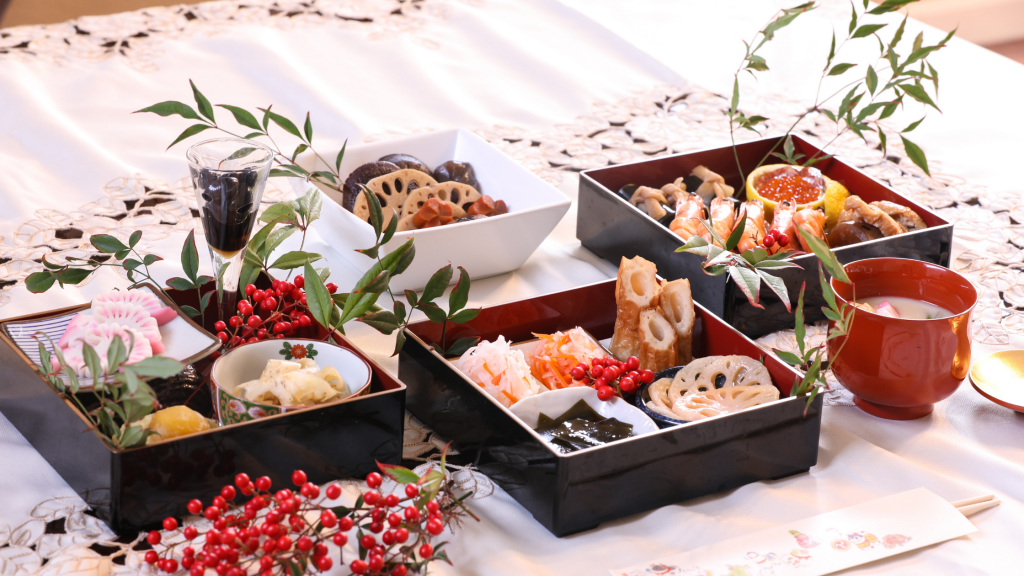Have you ever tried osechi ryouri (おせち料理) the Japanese New Year traditional food? Those dishes are a wonder for your eyes and your palate!
The Tradition of おせち料理
The おせち are special dishes that Japanese family will eat during the first few days of January. 料理 means food. The new year dishes are very special and you will never find them on a menu during the year.
Recipes vary from regions to regions. In some places, a particular dish could be a sign of bad luck. Whereas, in another region, the same dish is an appreciated sign of good fortune. Japanese family prepares the dishes during December. Indeed, according to the traditions, families should not cook the days following the new year. They will prepare all their meals in advance and store the food in a cool area. The おせち dishes are sweet, salty or dried so to be kept without refrigeration.
Check out our other blog posts on Japanese New Year:- 7 Things Japanese People Do To Celebrate The New Year in Japan
- How to Say “Happy New Year!” in Japanese
- What’s A Japanese New Year Postcard, Nengajo?
- Getting to Know Japanese New Year Culture
- New Year’s Day: A Time of Tradition
A Treat For The Eyes
Not only do おせち料理 look delicious and tasty, but the way dishes are also presented is as important as the taste itself! They’re placed in beautiful lacker boxes. The colours along with the way of packing are carefully elaborated.
Among the most common dishes, you will taste the 黒豆, soft and sweetened black beans, the 伊達巻, made of fish paste, quite like the 卵焼き. Sweet potato, chestnuts, dry sardines in a sweet sauce etc are also on the menu! Japanese typically serve the burdock root, lotus roots, mushrooms and carrots for vegetables.
Nowadays, Japanese people can order and buy おせち料理 from department stores, supermarkets or restaurant, starting from October. Recently, Japanese are also abandoning traditional dishes for sashimi, sushi or European cuisine.
 If you have the occasion to spend this holiday in a Japanese family, don’t miss the opportunity. New Year is the perfect time for you to witness Japanese culture’s love for symbol and traditions.
If you have the occasion to spend this holiday in a Japanese family, don’t miss the opportunity. New Year is the perfect time for you to witness Japanese culture’s love for symbol and traditions.